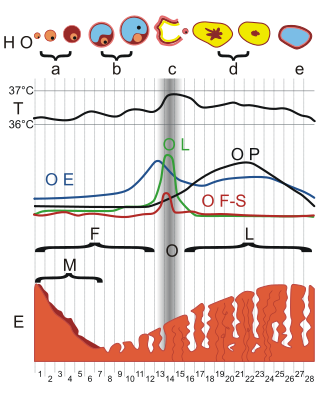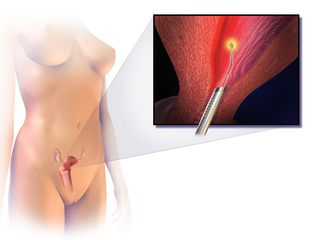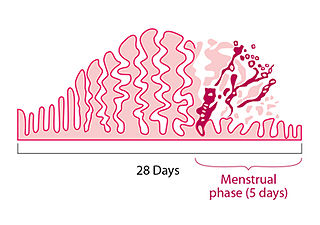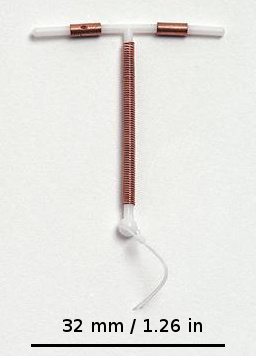Treatment

Treatment depends on identified underlying cause and varies between medication, radiation, and surgery. Heavy periods at menarche and menopause may settle spontaneously (the menarche being the start and menopause being the cessation of periods).
If the degree of bleeding is mild, all that may be sought by the woman is the reassurance that there is no sinister underlying cause. If anemia occurs due to bleeding then iron tablets may be used to help restore normal hemoglobin levels. [1]
The first line treatment option for women with HMB and no identified pathology, fibroids less than 3 cm in diameter, and/or suspected or confirmed adenomyosis is the levonorgestrel-releasing intrauterine system (LNG-IUS). [13] Clinical trial evidence suggests that the LNG-IUS may be better than other medical therapy in terms of HMB and quality of life. [18] Though, a 10-year study found that LNG-IUS was only as effective as oral medicines (tranexamic acid, mefenamic acid, combined oestrogen–progestogen or progesterone alone); the same proportion of women had not had surgery for heavy bleeding and had similar improvements in their quality of life. [19] [20]
Usually, oral combined contraceptive or progesterone only pills may be taken for a few months, but for longer-term treatment the alternatives of injected Depo Provera or the more recent progesterone releasing IntraUterine System (IUS) may be used. In particular, an oral contraceptive containing estradiol valerate and dienogest may be more effective than tranexamic acid, NSAIDs and IUDs. [21] [22] Fibroids may respond to hormonal treatment, and if they do not, then radiation or surgical removal may be required. Regarding hormonal treatment, the NICE guidelines states that: "No evidence was found on MRI-guided transcutaneous focused ultrasound for uterine fibroids nor for the progestogen-only pill, injectable progestogens, or progestogen implants." [13] Progestogen pills, independently if taken in a short or long course, are not as effective at reducing menstrual blood loss as LNG-IUS or tranexamic acid. [23]
NICE guidelines says that for individuals with HMB and no identified pathology or fibroids less than 3 cm in diameter who do not wish to have pharmacological treatment and who do not want to conserve their fertility, surgical options could be considered as a first-line treatment option. Options include a hysterectomy and second generation endometrial ablation, with hysterectomy being more effective than second generation endometrial ablation. [13]
Tranexamic acid treatments, which reduce bleeding by inhibiting the clot-dissolving enzymes, appear to be more effective than anti-inflammatory treatment like NSAIDs, but are less effective than LNG-IUS. [24] Tranexamic acid tablets may reduce loss by up to 50%. [25] This may be combined with hormonal medication previously mentioned. [26]
NSAIDs are also used to reduce heavy menstrual bleeding by an average of 20-46% through inhibiting the production of prostaglandins. [5] For this purpose, NSAIDs are ingested for only 5 days of the menstrual cycle, limiting their most common adverse effect of dyspepsia. [27]
A definitive treatment for heavy menstrual bleeding is to perform hysterectomy (removal of the uterus). The risks of the procedure have been reduced with measures to minimize the risk of deep vein thrombosis after surgery, and the switch from the front abdominal to vaginal approach greatly minimizing the discomfort and recuperation time for the patient; however extensive fibroids may make the womb too large for removal by the vaginal approach. Small fibroids may be dealt with by local removal (myomectomy). A further surgical technique is endometrial ablation (destruction) by the use of applied heat (thermoablation). [28] The effectiveness of endometrial ablation is probably similar to that of LNG‐IUS but the evidence is uncertain if hysterectomy is better or worse than LNG-IUS for improving HMB. [18]
Medications
These have been ranked by the UK's National Institute for Health and Clinical Excellence: [14]
- First line
- Second Line
- Tranexamic acid an antifibrinolytic agent
- Nonsteroidal anti-inflammatory drugs (NSAIDs).
- Combined oral contraceptive pills to prevent proliferation of the endometrium
- Third line
- Oral progestogen (e.g. norethisterone), to prevent proliferation of the endometrium
- Injected progestogen (e.g. Depo provera)
- Other options
Surgery
- Dilation and curettage (D&C) is not recommended for cases of simple heavy menstrual bleeding, having a reserved role if a spontaneous abortion is incomplete [29]
- Endometrial ablation is not recommended for women with active or recent genital or pelvic infection, known or suspected endometrial hyperplasia or malignancy. [30]
- Uterine artery embolization (UAE) is a common treatment with the etiology of a leiomyoma. The rate of serious complications is comparable to that of myomectomy or hysterectomy; however, UAE presents an increased risk of minor complications and requiring surgery within two to five years. [31] [32]
- Hysteroscopic myomectomy is a minimally invasive surgical procedure to remove leiomyomas (otherwise known as fibroids). Though a safe and effective mode of treating for menstrual disorders but it is unclear whether or not it is beneficial for treating infertility. [33]
- Hysterectomy is a surgical procedure consisting of the full removal of the uterus, and can include the removal of fallopian tubes (otherwise known as the uterine tubes), cervix and ovaries. [34]
In the UK the use of hysterectomy for heavy menstrual bleeding has been almost halved between 1989 and 2003. [35] This has a number of causes: better medical management, endometrial ablation and particularly the introduction of IUS [36] [37] which may be inserted in the community and avoid the need for specialist referral; in one study up to 64% of women cancelled surgery. [38]














